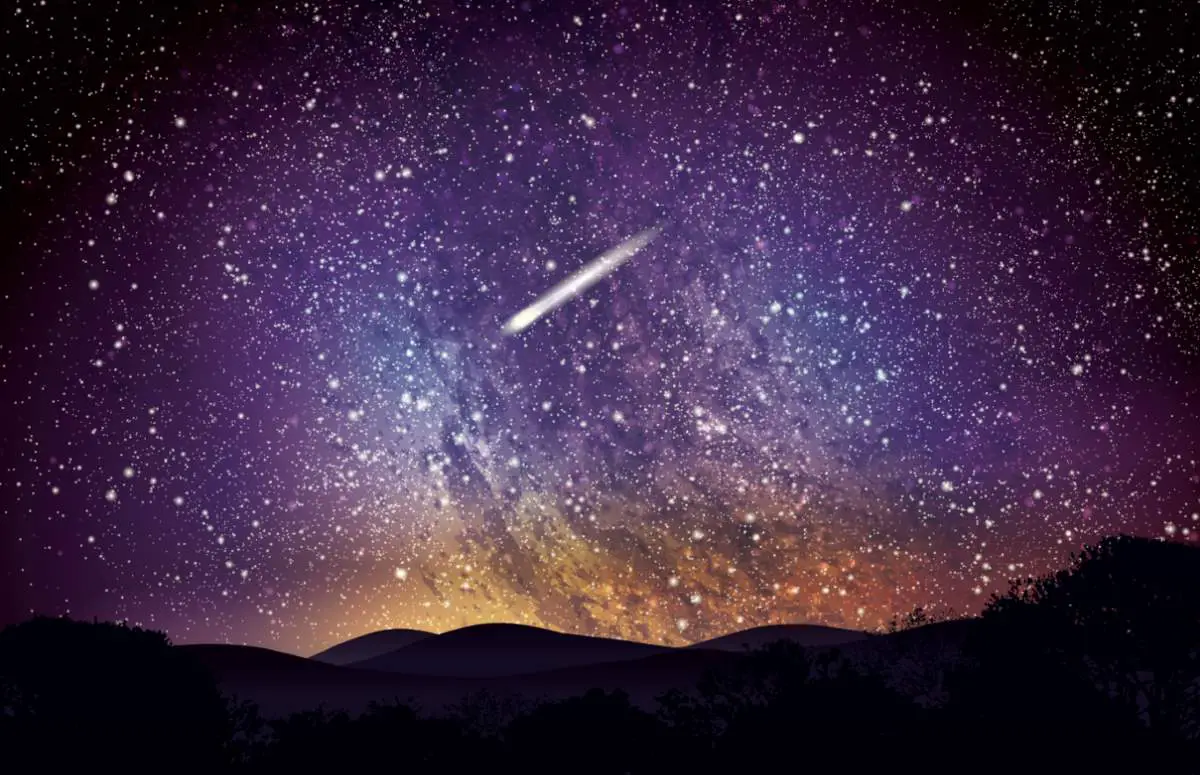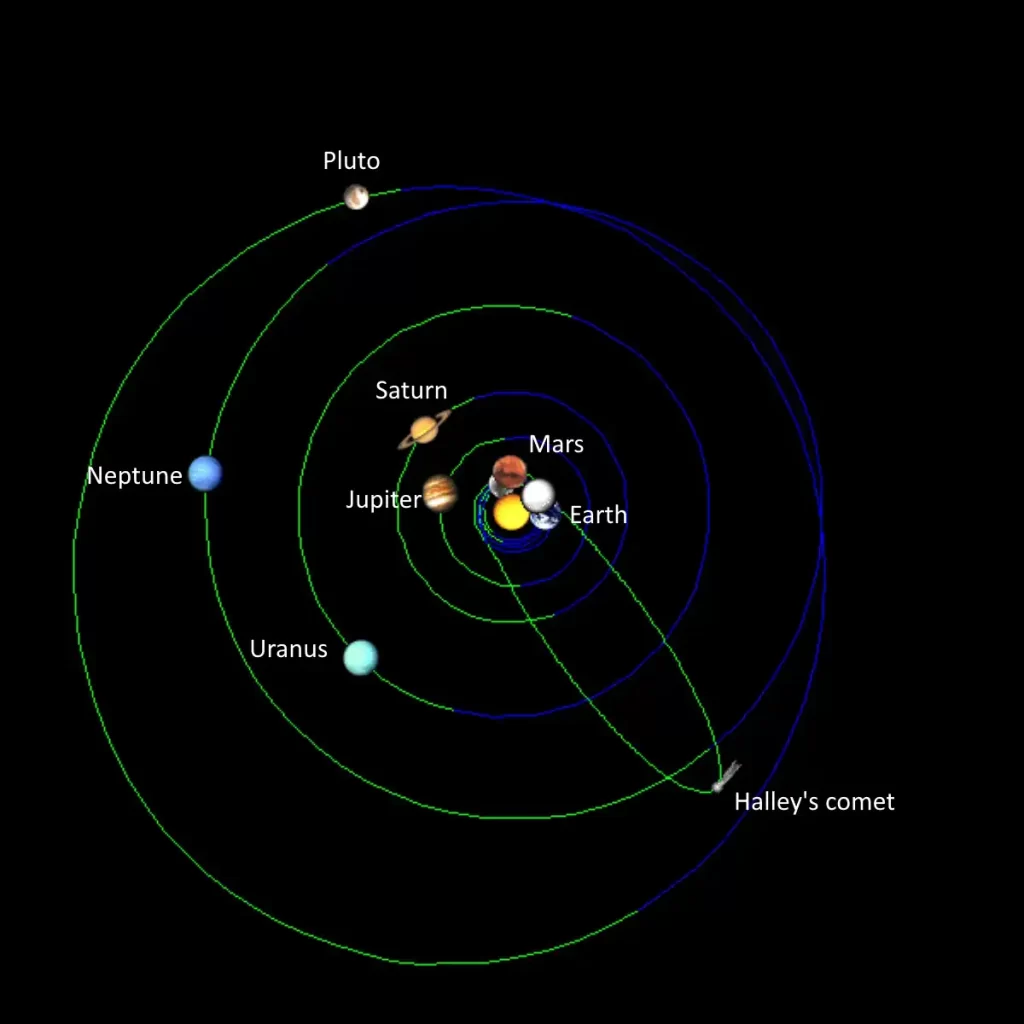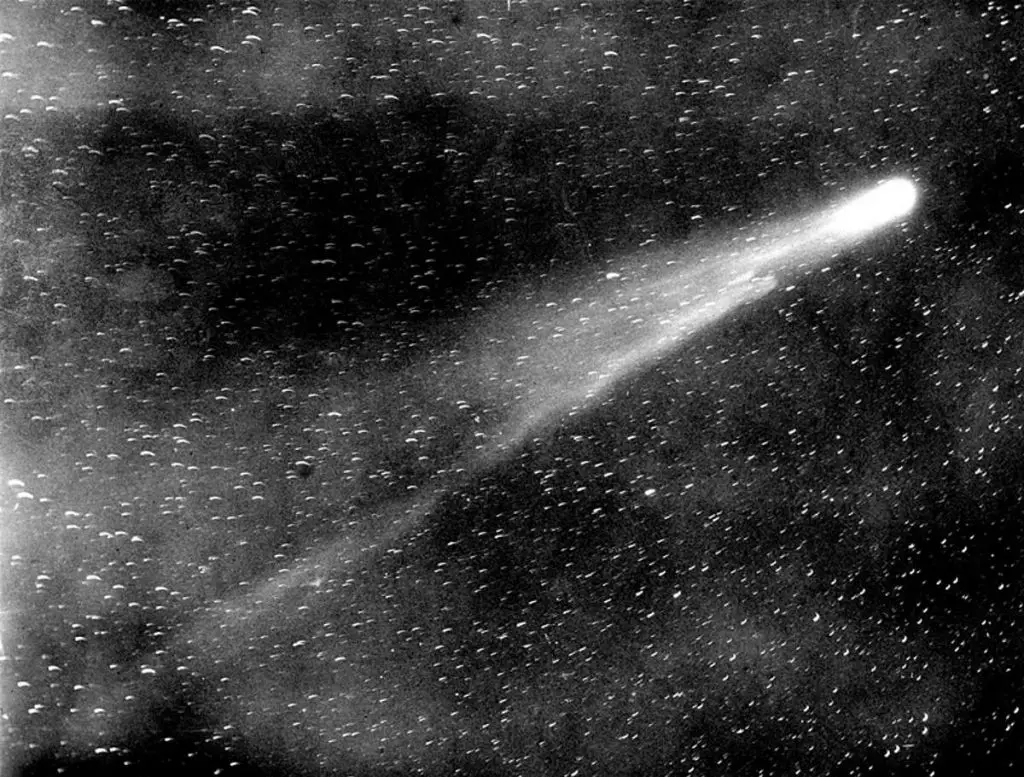On March 13, 1986, European Space Agency‘s (ESA) Giotto spacecraft made the closest approach to Halley’s Comet at a distance of 596 kilometers (370 miles).
Today’s (March 13) story of what happened this day in Science, Technology, Astronomy, and Space Exploration history.
Giotto Spacecraft
European Space Agency’s Giotto spacecraft was launched on July 2, 1985, with the objective of making close encounters with comets Halley and Grigg-Skjellerup. It was ESA’s first deep-space mission. It was also the first spacecraft ever to make close-up observations of a comet.
The mission was successful: Giotto made its closest approach to Halley’s Comet at a distance of 596 kilometers (370 miles) on March 13, 1986. It imaged Halley’s nucleus (see notes 1) and also found the first evidence of organic material on a comet.
The Giotto space probe discovered the size and shape of Halley’s nucleus and discovered that the surface is very dark and that bright jets of gas and dust spring out of its nucleus.

In 1992, after a long cruise through space, Giotto was directed to Comet Grigg-Skjellerup. This time, the spacecraft came as close as 200 kilometers (125 miles), but could not take photographs because some instruments were damaged from its previous encounter with Halley’s Comet. It sent back a lot of valuable information about the comet, though.
Named after John Grigg (4 June 1838 – 20 June 1920), a New Zealand music teacher ad astronomer, who first saw it on 23 July 1902, and James Francis Skjellerup (6 May 1875 – 6 January 1952), an Australian telegraphist working in South Africa, who rediscovered the comet on 17 May 1922, comet 26P/Grigg-Skjellerup completes one orbit around the Sun every 5.1 years (the letter “P” indicates that it is a “periodic” comet).
The spacecraft was named after the Early Italian Renaissance painter and architect Giotto di Bondone (1267-1337), who had observed Halley’s Comet in 1301 and was inspired to depict it as the Star of Bethlehem (the Christmas Star) in his painting Adoration of the Magi in the Scrovegni Chapel.


Halley’s comet
Halley’s Comet (1P/Halley) is a short-period comet visible from Earth every 74-79 years. Halley is the only known short-period comet that is regularly visible to the naked eye from Earth, and the only naked-eye comet that might appear twice in a human lifetime.
The letter “P” indicates that Halley is a “periodic” comet. Periodic comets have an orbital period of fewer than 200 years. 1 indicates that Halley is the first numbered comet. As of March 2022, there are 436 numbered comets (1P-436P). Periodic comets are numbered by the Minor Planet Center (MPC) after having been observed on at least two occasions.
Comet Halley’s size is about 9 miles by 5 miles (15 x 8 km) with a mean diameter of 6.84 miles (11 km).
The comet’s periodicity was first determined in 1705 by English astronomer Edmond (or Edmund) Halley (8 November [O.S. 29 October] 1656 – 25 January 1742 [O.S. 14 January 1741]), after whom it is now named.
Edmund Halley successfully predicted the comet’s return in 1758, which he did not live to see.
Halley’s appearance in the inner Solar System has been observed and recorded by many recognized astronomers since at least 240 BC. Clear records of the comet’s appearances were made by Chinese, Babylonian, and medieval European chroniclers, but were not recognized as reappearances of the same object at the time. As mentioned above, the Early Italian Renaissance painter and architect Giotto also had observed Halley’s Comet in 1301.

When will Halley’s comet be visible again?
Halley is a short-period comet visible from Earth every 75-76 years. It was visible from Earth in 1986. The next closest approach to Earth will be in mid-2061, so Halley’s comet will be visible from Earth in 2061 again.
Where is Halley’s comet now in 2022?
As of 2022, Halley’s comet lies outside the orbit of Neptune, and not far from its aphelion point (aphelion is the point in the orbit of a planet, comet, or other body most distant from the Sun).

Notes
- Soviet Union’s Vega 1 spacecraft started returning images of Halley on 4 March 1986, and the first ever of its nucleus – it was the first photograph of the nucleus of any comet. Vega 1’s closest approach to Halley’s comet was 8,889 km (5,523 miles).
Sources
- Giotto spacecraft (overview) on the European Space Agency (ESA) website
- Giotto (spacecraft) on Wikipedia
- 1P/Halley on the NASA Solar System Exploration website
- Halley’s Comet on Wikipedia
- 26P/Grigg-Skjellerup on Wikipedia
- Grigg-Skjellerup on the European Space Agency (ESA) website
- Cover image: Artist’s rendering of European Space Agency’s Giotto spacecraft approaching the Halley’s comet. By Andrzej Mirecki – Own work, CC BY-SA 3.0, Link
- Budget of NASA, Year by Year [1980-1989] - June 10, 2024
- Budget of NASA, Year by Year [1970-1979] - June 10, 2024
- Budget of NASA, Year by Year [1958-2024] - June 10, 2024

